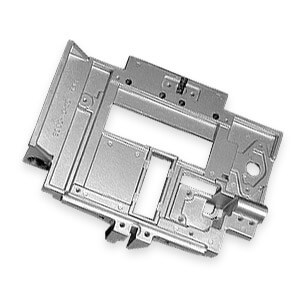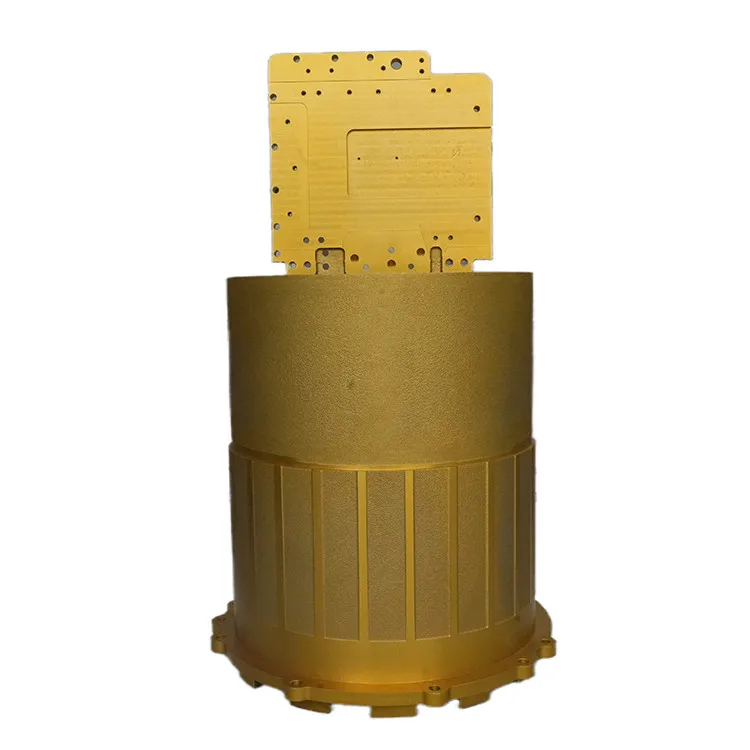Aluminum Casting Explained: Trick Facts and Insights for Market Professionals
Aluminum casting works as an essential process in modern manufacturing, forming components throughout numerous industries. Its varied techniques, such as sand and die casting, provide to different production requirements. The unique homes of aluminum alloys boost their applicability, yet tests remain in preserving high quality and performance. Understanding these elements is crucial for industry specialists. What are the latest improvements and ideal techniques that can further optimize this process?
Introduction of Aluminum Casting Processes

Crucial element of aluminum casting processes include the preparation of molds, which may be made from sand, metal, or ceramic products, depending upon the meant usage. In addition, temperature level control is vital to guarantee correct melting and solidification of aluminum.
The casting procedure allows for intricate layouts and can accomplish high degrees of dimensional accuracy. When cooled down, the castings may undergo ending up operations such as machining or surface area therapy to fulfill particular efficiency standards. In general, aluminum casting functions as a flexible production strategy, efficiently satisfying the varied needs of various sectors.
Kinds Of Aluminum Casting Approaches
In the domain of aluminum casting, numerous techniques are employed to achieve various results. Sand casting techniques offer adaptability and cost-effectiveness for complicated forms, while die casting processes use high accuracy and effectiveness for automation. Understanding these approaches is vital for picking the ideal approach based on task demands.
Sand Casting Strategies
Sand casting techniques stand for a basic technique in aluminum casting, where sand is used as a mold and mildew material to shape liquified steel. This procedure entails producing a pattern from the preferred component, which is after that placed in a sand blend to create a mold and mildew. The sand is compressed around the pattern, and after removal, it produces a tooth cavity in the form of the component. Molten aluminum is put into this cavity, enabling it to cool down and solidify. One considerable advantage of sand casting is its convenience; it can accommodate huge parts and intricate forms. In addition, the products used are reasonably low-cost, making it an available choice for different manufacturing applications in the aluminum market.
Die Casting Processes
Die casting processes are a popular technique for shaping aluminum elements, utilizing high-pressure techniques to require liquified metal right into specifically crafted mold and mildews. This process is especially favored for its ability to create complex shapes with limited tolerances and a smooth coating. There are 2 key kinds of die casting: hot chamber and chilly chamber. Hot chamber die casting appropriates for metals with reduced melting factors, enabling faster production rates. On the other hand, chilly chamber die casting is excellent for higher melting point steels, calling for a different melting heater. Both techniques improve efficiency and decrease product waste, making them necessary in vehicle, aerospace, and consumer goods industries. Understanding these procedures assists professionals pick the most appropriate strategy for their specific applications.
Product Feature of Aluminum Alloys

Strength and Resilience
Toughness and longevity are vital qualities of aluminum alloys that make them suitable for different casting applications. These products show a favorable strength-to-weight ratio, enabling for the production of light-weight yet durable parts. When it come to tensile strength, particular aluminum alloys can be crafted to stand up to substantial lots without flawing. This home is especially crucial in industries such as aerospace and automobile, where performance and security are vital. In addition, aluminum alloys usually retain their mechanical residential properties under varied temperature conditions, guaranteeing constant performance. The intrinsic ductility of these alloys also enables reliable shaping throughout the casting process, making it less complicated to generate complex geometries. In general, the strength and resilience of aluminum alloys contribute greatly to their prevalent usage in advanced applications.
Deterioration Resistance Characteristics
While aluminum alloys are valued for their toughness and lightweight residential or commercial properties, their rust resistance is another important attribute that improves their viability for different applications. Aluminum normally develops a protective oxide layer when exposed to dampness, which assists to avoid further oxidation. This integral residential property makes aluminum alloys specifically important in environments susceptible to corrosion, such as industrial and aquatic settings. Furthermore, different alloy make-ups can influence resistance degrees, with specific alloys specifically crafted to enhance this particular. Treatments like plating can further boost corrosion resistance by enlarging the oxide layer. Consequently, recognizing the rust resistance of aluminum alloys is essential for market professionals when choosing products for projects calling for sturdiness and longevity in difficult settings.
Advantages of Aluminum Casting in Production
Aluminum casting deals numerous advantages in production, making it a favored choice for numerous markets. One significant advantage is its lightweight nature, which adds to decreased transport prices and improved energy effectiveness in final product. Aluminum's exceptional thermal and electric conductivity boosts capability in applications calling for heat dissipation or electric transmission.
The product's capacity to be cast right into detailed forms enables layout adaptability, reducing the requirement for extra machining procedures. Additionally, aluminum casting displays remarkable rust resistance, bring about longer item life expectancies and reduced upkeep expenses.

Usual Applications of Aluminum Castings
The flexibility of aluminum casting allows its widespread usage across different sectors. Common applications consist of vehicle components, where light-weight and corrosion-resistant elements, such as engine blocks and transmission housings, enhance car efficiency. In the aerospace sector, aluminum castings are used for architectural components, providing toughness without adding significant weight.
In addition, the electrical industry benefits from aluminum spreadings in making enclosures and heat sinks, where thermal conductivity is crucial. The durable goods market likewise integrates aluminum spreadings in items like pots and pans, furniture, and ornamental products, incorporating visual appeals with performance.
The construction sector utilizes aluminum castings for architectural aspects, window frameworks, and components, which give resilience and design flexibility. On the whole, the varied applications of aluminum spreadings highlight their significance in modern manufacturing, adding to improvements in effectiveness and product design throughout numerous areas.
Developments and Technological Advancements
As industries remain to advance, advancements in aluminum casting innovation are transforming manufacturing procedures and product capabilities. Innovations in 3D printing and additive production have enabled the production of complicated geometries that were previously difficult to accomplish with conventional approaches. These modern technologies enable for rapid prototyping, minimizing preparations and costs.
Additionally, renovations in mold and mildew style and materials have enhanced the casting process by boosting performance and lowering waste. The assimilation of from this source wise production methods, such as IoT devices and real-time information analytics, permits for far better monitoring and optimization of manufacturing specifications, leading to higher quality outputs.
Advancements in aluminum alloys give enhanced strength, corrosion resistance, and light-weight homes, providing to the expanding demands in automobile and aerospace fields. Jointly, these innovations are not only enhancing efficiency yet additionally meeting the rigorous standards of modern engineering applications.
Finest Practices for Top Quality Control in Aluminum Casting
Guaranteeing high-quality outputs in aluminum casting needs adherence to finest techniques that incorporate numerous phases of the production process. Extensive product examination is crucial to validate the top quality of aluminum alloys made use of, as contaminations can substantially affect the final product. Implementing specific melting and putting methods lessens issues; keeping excellent temperatures avoids oxidation and advertises harmony.
Furthermore, mold layout plays an important Related Site role; using computer-aided layout (CAD) can improve precision and minimize human error. Normal tracking of the cooling process is critical to prevent warping and shrinking. Additionally, utilizing non-destructive screening techniques, such as ultrasonic or X-ray inspections, aids determine inner problems without damaging the parts.
Developing a feedback loophole with designers and operators cultivates continual renovation, ensuring that high quality control steps advance together with technical improvements. By adhering to these finest techniques, suppliers can enhance the integrity and performance of aluminum castings.
Often Asked Inquiries
What Are the Environmental Effects of Aluminum Casting?
The ecological effects of aluminum casting include significant power consumption, greenhouse gas discharges, and possible water pollution from foundry operations. Additionally, bauxite mining for aluminum ore can bring about habitat damage and dirt destruction.
Exactly How Does Aluminum Casting Compare to Various Other Steel Casting Procedures?
Aluminum casting commonly provides benefits in lightweight components and rust resistance contrasted to various other procedures, such as iron or steel casting, which might give greater strength however lead to heavier and less corrosion-resistant products. - aluminum casting
What Prevail Flaws in Aluminum Castings and Their Reasons?
Usual issues in aluminum spreadings consist of porosity, shrinkage, and inclusions. Reasons often stem from improper putting strategies, poor mold and mildew layout, or contamination of the liquified steel, influencing the end product's stability and performance.
What Security Precautions Should Be Taken During Aluminum Casting?
Throughout aluminum casting, necessary security preventative measures include wearing protective equipment, making certain appropriate ventilation, maintaining a clean workspace, handling molten steel with treatment, and following well-known procedures to decrease threats of burns, breathing risks, and crashes.
Just How Can I Enhance the Efficiency of My Aluminum Casting Procedures?
To boost effectiveness in aluminum casting procedures, one must enhance mold and mildew layout, improve material handling, use automated processes, conduct normal maintenance on devices, and buy worker training to boost skills and performance.
Various approaches exist, aluminum casting includes several key processes that provide to different applications and needs. Key components of aluminum casting processes consist of the preparation of mold and mildews, which may be made from sand, steel, or ceramic materials, depending on the planned use. Sand casting strategies represent a basic method in aluminum casting, where sand is made use of as a mold product to shape liquified steel. As markets proceed to advance, developments in aluminum casting technology are transforming production procedures and item my review here abilities. Guaranteeing high-quality outcomes in aluminum casting requires adherence to finest practices that include various stages of the production procedure.